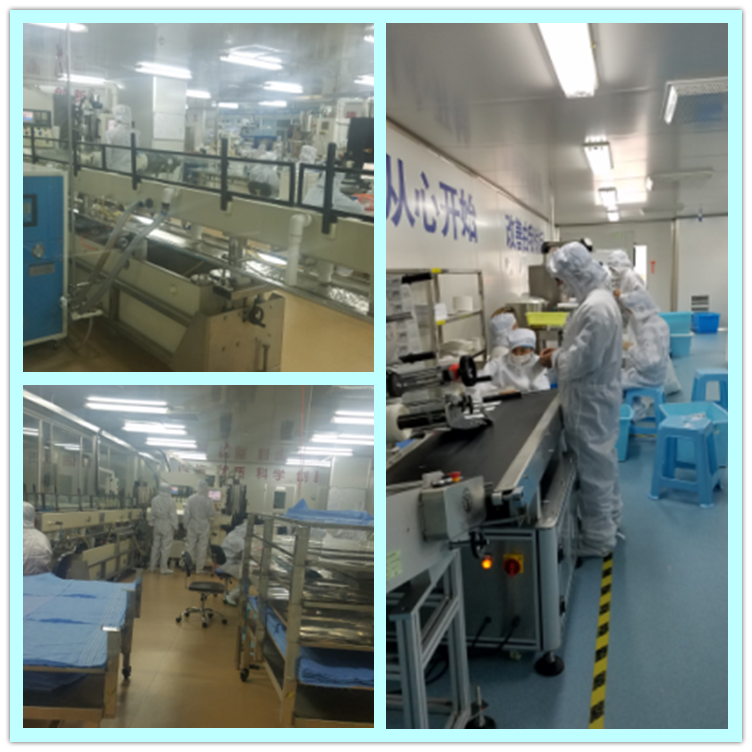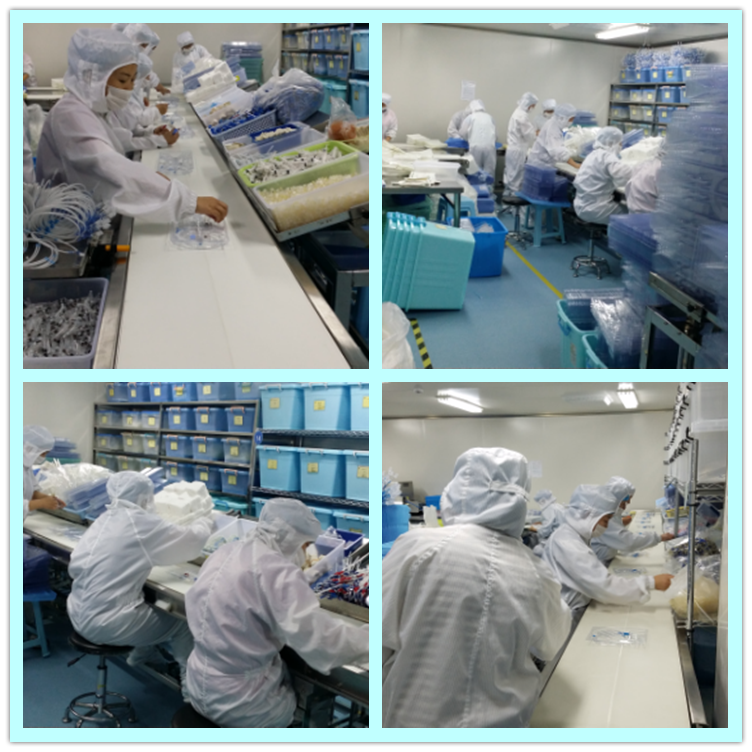Management measures to increase pig productivity
The pig industry is affected by the production cycle and the economic environment. The price of live pigs and pork fluctuates frequently. It is highly volatile and has a great impact on the income of pig farmers. Due to the current loss of sales of live pigs, some pig farmers have reduced their scales and even stopped production. The existing pig farmers have reduced their investment in order to reduce production costs, ignoring the management of farming links and extending the shelf life of hogs, causing the cost of raising livestock to be artificially low. increase. Therefore, according to the current market situation, only by adopting scientific feeding and management can we continuously improve the production capacity of hogs and achieve better economic benefits.
The selection of hybrid pigs was affected by the market. The price of pigs fell from 20 yuan per kilogram in January to 14 yuan, and the figure was about 30% in the next month. This is a good time for the hogs to be added and the cost is relatively low. The pig breeds and the type of hybrid have an effect on the growth and carcass quality of the pigs. At present, most pig farmers in rural areas rear the grown-up or long-grown Binh Duo and Duchangga or Du Dachang hybrid three-way hybrid pigs, all of which have concentrated on the excellent characteristics of the parents, with fast growth, provincial feed, High lean meat and good meat quality. According to the comparative analysis of production, under the same management conditions, hybrid pigs were slaughtered 10 to 15 days earlier than normal pigs, and their income per head was about 20 yuan higher.
To improve the uniformity of rural proverbs, “one or two fewer students, one pound less weaned, and less ten pounds of slaughter†indicates that there is a certain relationship between the slow growth of pigs and their birth weight, reflecting the increase in the weight of weaned pigs and the shortening period of pig rearing. Has a significant role. In the rural areas, 45-day-old weaning is generally performed. The weaning weight of the sow is 7 kg to 8 kg, which is equivalent to the weaning weight of the pigs before the 35-day-age of the large-scale pig farm. Therefore, under the condition of the same number of nests, the weight uniformity of weaned pigs is good, and the weight of weaning litters is high, then the total litter weight is also high at the age of 6 months, and the slaughter rate and the hog grade can be increased, and the yield is naturally high. Therefore, it is particularly important to strengthen the feeding and management of nursing sows, suckling pigs, and nursery pigs.
The growth pattern of the whole-supply feed meat pigs is from the age of 2 months to 3 months after birth to 40 kg, and after 50 kg is the period of rapid increase in fat. Therefore, 15 kilograms to 30 kilograms are mainly based on long bones and muscles, which require high feed nutrient content. The full-price pig material should be used to achieve a protein content of 18% to 21% to ensure a balanced supply of protein, calcium and phosphorus. 30kg ~ 60kg should use the full price of growing pigs, so that the protein content of 15.5% ~ 17%, feed ratio of 2.3:1. 60 kg ~ 100 kg is gradually increasing the rate of growth of fat, pigs should be used fattening material, Crude protein content of about 15%, feed ratio 2.6 to 2.8:1. Conditional farm owners should add about 2kg of green feed each day to ensure the supply of vitamins and minerals. In general, pigs are fed with 60 kg of feeds 4 times the day before and 60 kg feed on the 3rd day of the day. In the early stage, dry powders are mainly used for free feeding. During the later period, under the condition of ensuring adequate drinking water, the food is kept for 1 day every week to increase the number of pigs. Feed utilization and carcass quality. The full price of feed for pigs should be properly preserved to prevent overdue, moldy, deteriorating, and toxic and hazardous substances, causing pig disease and poisoning.
Improving the environment of small-scale environment such as temperature, humidity, airflow, and illumination, etc., chemical factors such as carbon dioxide, ammonia, hydrogen sulfide and other factors such as dust, microbes and other factors will affect the pig production, only as far as possible. Creating the comfortable and healthy environmental conditions suitable for the growth and development of pigs can achieve the best economic benefits. Production practice tells us that the optimum temperature for different-weight pigs is different. The optimum temperature for 20 kg to 50 kg of pigs is 18 °C to 21 °C, and the optimum temperature for 50 kg to 100 kg of hogs is 16 °C to 20 °C. When the ambient temperature is higher than 30°C, cool down measures such as opening the vertical exhaust system, spraying cold water, and feeding green feed, etc.; when the temperature is too low, seal doors and windows, reduce cold wind invasion, fire heating or boiler Heating and other measures to increase temperature and promote weight gain. Humidity over the General Assembly affect the regulation of body temperature of pigs, resulting in the growth of the bacteria, increased incidence, slow growth, skin eczema and other diseases; too low humidity is too dry inside, easy to make the skin, mucous membranes dry, lower resistance, while dust flying Respiratory diseases are easy to occur. The optimum humidity for nursery pigs is 45%~55%, and that for growing pigs is 50%~65%. It is advisable to use natural light for the light of the pigs, usually for 8 hours to 10 hours. Excessive light and long lighting will cause the pigs to become restless, increase the activity power, and reduce the daily weight gain. If the light is too weak or too short, it will increase fat deposition. The body of the carcass is more fat and the lean meat rate is reduced, and it is not conducive to the pig health examination. Strengthen ventilation and ventilation, maintain fresh air in the house, will reduce the harmful gas inventory, conducive to feed intake and growth of pigs, generally take the installation of fans and ventilation fans, open doors and windows, planting flowers and other methods. The pig house advocates drying, proper temperature and humidity, and good ventilation, so that the pathogenic microorganisms will not be able to reproduce and survive, and the occurrence of respiratory and digestive tract diseases can be controlled to a minimum.
In order to control the density of pigs in a social life, sleeping, resting, standing, activities, eating, drinking water, excreting urine, play and other behaviors have certain effects on the growth rate and feed conversion rate of the pigs. The effective area of ​​the house is generally based on 0.3~0.50.5/head of nursery pigs, and 0.9~1.21.2/head of finishing pigs to calculate the sleeping, defecation, feeding and drinking areas, and to conduct positioning and management. Drinking water is generally installed with a duckbill type drinking device for every 8 to 12 pigs, and its level is: 0.18m~0.25m for nursery pigs, 0.4m~0.55m for grower pigs, and 1 liter/min standard for drinking water flow. . Insufficient drinking water can cause loss of appetite, decreased intake, and constipation. Feeding widths were: nursery pigs 0.18m~0.22m/head, finishing pigs 0.3m~0.35m/head. Large herd density, increased number of frictions, reduced daily gains and feed conversion ratios; small herd density, increased body heat loss, increased feed intake, but at the same time the need for maintenance of heat is greater, and daily gain is also reduced . Generally, each column (shelter) is suitable for 10 days to 12 heads, and it is better to carry out the original group breeding, such as the new group of pigs, body weight as close as possible to avoid mutual bite.
Regular epidemic prevention and disinfection In the rearing management, good immunization and environmental disinfection can effectively cut off the way of disease transmission, thus improving the resistance of pigs, speeding up the slaughter and improving the efficiency of hogs. Immunization adhered to proceduralization: piglets were firstly vaccinated from 25 days to 30 days, and once at 60 days to 70 days; high pathogenic porcine blue ear disease was 28 days to 35 days old and 60 days old. Once; foot-and-mouth disease 25 days old ~ 35 days old free, 60 days to 70 days of time to strengthen once; sub-typhoid parasites 35 days old to 40 days old; pig erysipelas, lung disease 40 days to 45 days old The edema disease vaccine is 30 days old to 35 days old; the streptococcal vaccine is 40 days old to 45 days old, and the laboratory antibody monitoring is performed regularly, and the antibody level cannot meet the requirements and should be reimbursed in time. Environmental disinfection adheres to institutionalization: sweep pig houses once or twice a day; enter the gates and disinfecting pools (bowls) in front of each pig house, add 3% fire alkali once a week and replace them once a month; every quarter Disinfect once with 2% chloralkali; clean pigs daily, weekly with 1:3000 or 0.5% peroxy acetic acid; once every two weeks with 2% trichlorfon pigs; The ground is periodically disinfected with 3% to 5% of Sur; the manure is deposited dry and thoroughly sprayed with 5% to 10% of Sur.
Product feature for Central Venous Catheter Kit
1. Movable clamp ensures puncturing much safer
2. The soft hub allows for patient comfort.
3. Soft polyurethane and soft tip ensure to reduce trauma to vessel wall.
4. The radiopaque catheter and tip facilitate vessel location when visualized by X-Ray.
5. Multiple introducing needles available in syringe type or Y-shaped introducing needles.



Central Venous Catheter,Central Venous Catheter Kit,Central Venous Lines,Central Venous Line Kit
Anesthesia Medical Co., Ltd. , http://www.sinoanesthesia.com